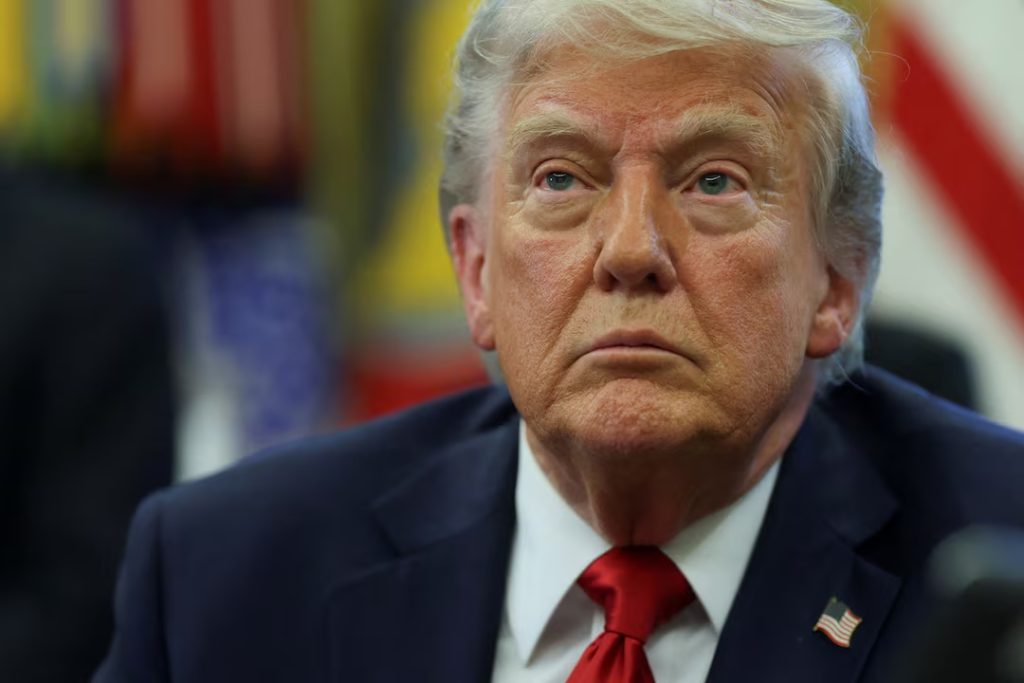In a significant move that has reignited debates over military policy and civil rights, the Trump administration has asked the U.S. Supreme Court to allow the enforcement of a controversial ban on transgender individuals serving in the U.S. military. This policy, first introduced during President Donald Trump’s first term and revived in his second, has sparked widespread discussion, with implications for thousands of service members and the broader landscape of transgender rights in the United States. The administration’s push to implement the ban, detailed in Executive Order 16210 titled “Prioritizing Military Excellence and Readiness,” comes after lower courts issued injunctions blocking its enforcement, prompting an appeal to the nation’s highest court.

Background of the Transgender Military Ban
The debate over transgender individuals serving in the U.S. military began gaining traction in 2016, when the Obama administration lifted a longstanding ban, allowing transgender troops to serve openly and access gender-affirming care. This policy shift enabled thousands of transgender individuals to enlist or continue serving without concealing their gender identity. According to The Williams Institute, transgender people are approximately twice as likely as the general population to serve in the military, with over 4,000 active-duty service members diagnosed with gender dysphoria, a medical condition characterized by distress due to a mismatch between one’s gender identity and sex assigned at birth.
However, in 2017, during his first term, President Trump announced via social media his intent to reverse this policy, citing concerns over “military readiness” and “medical costs.” The initial ban, formalized in 2019, prohibited new transgender recruits from enlisting while allowing existing transgender service members to remain under certain conditions. The Supreme Court, in a 5-4 decision in 2019, permitted this version of the ban to take effect while legal challenges continued.
In 2021, President Joe Biden issued an executive order revoking Trump’s ban, restoring open service for transgender individuals. This reversal allowed individuals like 2nd Lt. Nicholas Talbott, a plaintiff in ongoing lawsuits, to enlist and serve openly. However, following Trump’s return to the presidency in 2025, the administration swiftly reinstated and expanded the ban through Executive Order 16210, signed on January 27, 2025. The new policy not only bars new transgender recruits but also mandates the discharge of current transgender service members, affecting an estimated 1,000 troops.
The Supreme Court’s Involvement
On May 6, 2025, the U.S. Supreme Court issued a 6-3 ruling in Shilling v. Trump, granting the Trump administration’s emergency request to lift a lower court’s injunction that had blocked the ban’s enforcement. The decision, issued without detailed reasoning, allows the administration to begin implementing the policy while legal challenges continue in lower courts. The three liberal justices dissented, signaling ongoing divisions within the court on issues of transgender rights.
The administration’s appeal to the Supreme Court followed rulings by federal judges in Washington state and the District of Columbia, who had issued nationwide injunctions to halt the ban. U.S. District Judge Benjamin Settle, in the Washington state case, described the policy as “unsupported, dramatic, and facially unfair,” arguing that the government provided no evidence to support claims that transgender service members undermine military readiness. Similarly, U.S. District Judge Ana Reyes, in the D.C. case, called the ban “soaked in animus and dripping with pretext,” asserting it violated constitutional equal protection guarantees.

Despite these lower court rulings, the Supreme Court’s decision to lift the injunctions has paved the way for the Pentagon to act swiftly. Defense Secretary Pete Hegseth issued a memo on May 8, 2025, giving active-duty transgender service members 30 days (until June 6) and reservists 60 days (until July 7) to voluntarily leave the military or face discharge. The policy also directs commanders to identify transgender troops through routine medical checks, raising concerns about privacy violations and potential outing of service members who have not disclosed their gender identity.
Impact on Transgender Service Members
The Supreme Court’s ruling has left transgender service members like Commander Emily Shilling, Major Erica Vandal, and 2nd Lt. Nicholas Talbott in a precarious position. Shilling, a naval aviator with nearly two decades of service and over 60 combat missions, is a lead plaintiff in the Washington state lawsuit. She expressed heartbreak over the ruling, stating, “Transgender service members have served this nation with courage, skill, and selflessness for years.” As president of SPARTA Pride, a nonprofit advocating for transgender troops, Shilling emphasized her duty to challenge what she believes is an unlawful order.
Talbott, who sued the Trump administration in 2017 over the first ban, described the decision to challenge the policy as “heavy” but necessary, inspired by his late grandmother. Having enlisted after Biden’s 2021 executive order, Talbott now faces the prospect of discharge, despite his lifelong dream of military service. Major Erica Vandal, another plaintiff, called the Supreme Court’s decision “a blow,” highlighting her 14 years of service in the Army. These service members, among others, now face a stark choice: leave voluntarily or risk being forcibly removed.
Colonel Bree Fram, one of the highest-ranking openly transgender service members in the U.S. Space Force, spoke to NPR about the personal toll of the ban. “This moment affects my life and job,” she said, noting the uncertainty it creates for her career and the broader transgender military community. Fram’s comments underscore the human cost of the policy, which critics argue punishes individuals for their identity rather than their performance.

Broader Implications for Transgender Rights
The military ban is part of a broader push by the Trump administration to roll back transgender protections. Executive Order 16210 avoids explicitly using the word “transgender” but asserts that individuals whose gender does not align with their sex assigned at birth conflict with the “honorable, truthful, and disciplined lifestyle” expected of service members. Critics, including legal experts, argue this language is a thinly veiled attempt to disguise discrimination as a neutral policy targeting gender dysphoria. The American Psychiatric Association has clarified that gender dysphoria is a medical condition, not a synonym for being transgender, rendering the administration’s rationale questionable.
The policy has drawn sharp criticism from advocacy groups like the Human Rights Campaign and Lambda Legal, who argue it unfairly targets a group that has demonstrated bravery and competence in service. “Transgender individuals meet the same standards and demonstrate the same values as all who serve,” said Sarah Warbelow of the Human Rights Campaign. Legal challenges are ongoing, with plaintiffs arguing the ban violates constitutional protections. However, the Supreme Court’s history of deference to military policy suggests an uphill battle for opponents.
Public and Political Reactions
The Supreme Court’s decision has elicited varied responses. White House Press Secretary Karoline Leavitt called it a “massive victory,” stating that President Trump and Defense Secretary Hegseth are “restoring a military focused on readiness and lethality.” Conversely, posts on X reflect polarized sentiments, with some users praising the ban as a return to traditional military standards, while others condemn it as discriminatory and harmful to national security by removing qualified personnel.
The policy’s implementation raises questions about its long-term impact on military recruitment and morale. With transgender individuals historically overrepresented in military service, their exclusion could exacerbate existing recruitment challenges. Moreover, the process of identifying transgender troops through medical records has sparked concerns about privacy and fairness, potentially undermining trust within military units.
What’s Next?
While the Supreme Court’s May 6 ruling allows the ban to proceed, it is not a final decision on its legality. Lower courts, including the Ninth Circuit Court of Appeals and the D.C. Circuit, will continue to hear challenges, with a potential return to the Supreme Court for a definitive ruling. Advocates remain hopeful that evidence of transgender service members’ successful contributions, bolstered by studies from the Defense Department during the Biden administration, will sway future decisions.
For now, transgender service members face an uncertain future, balancing personal identity with their commitment to serve. As Commander Shilling told NBC News, “We’ve proven our worth. This isn’t about readiness—it’s about prejudice.” The outcome of this legal battle could shape not only military policy but also the broader fight for transgender rights in the United States.
For You :- Skilla Baby: Detroit’s Rising Rap Star Shines Bright





